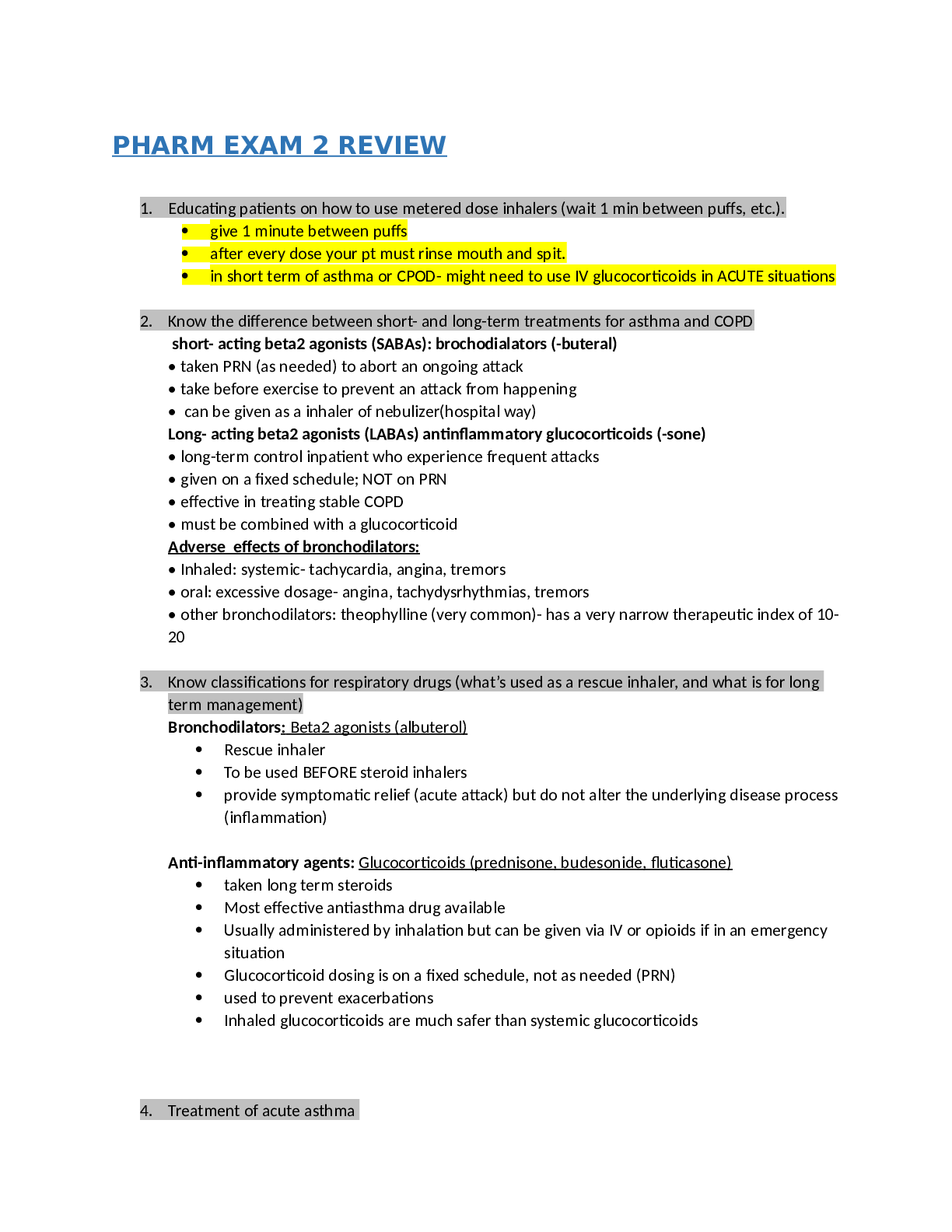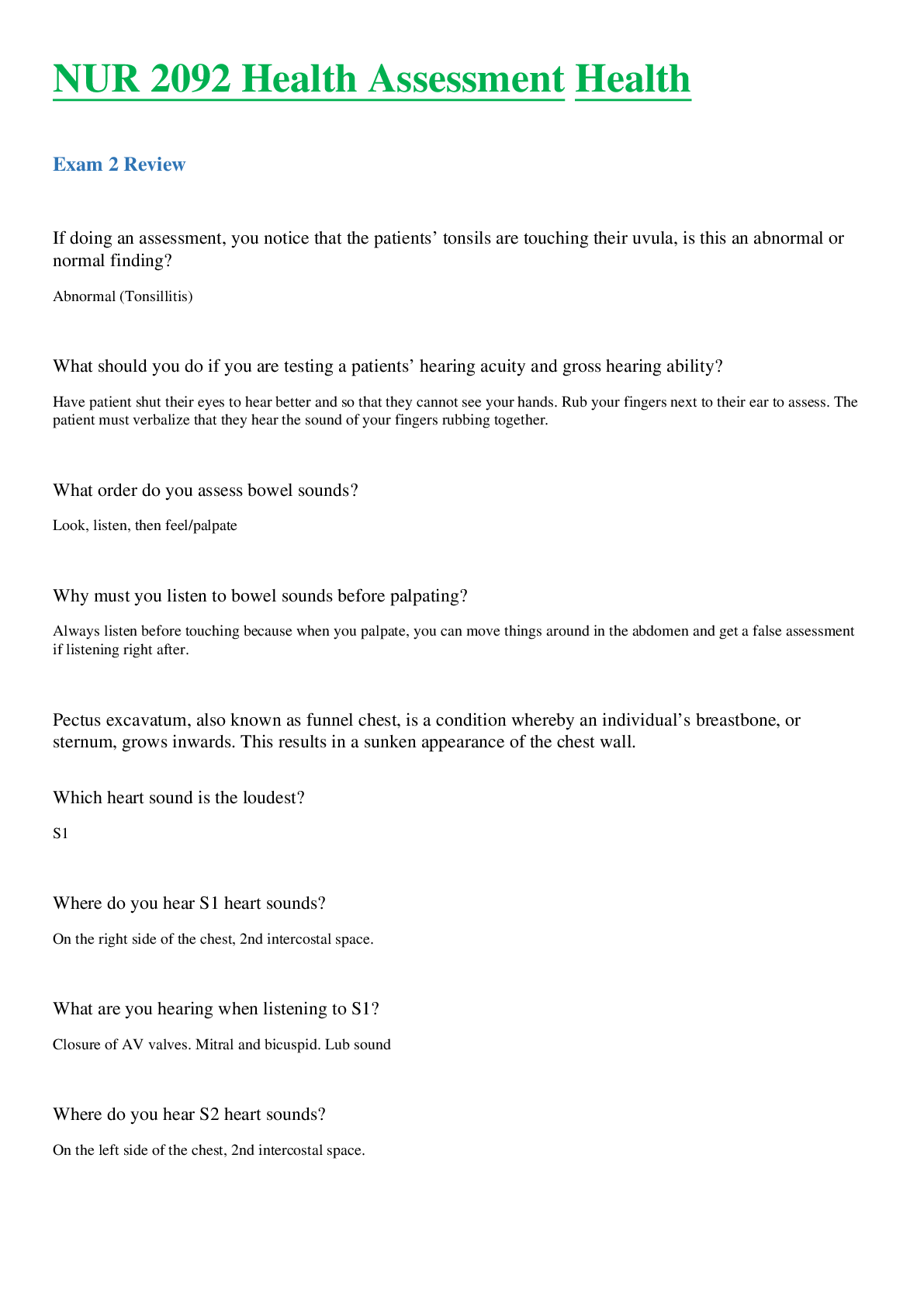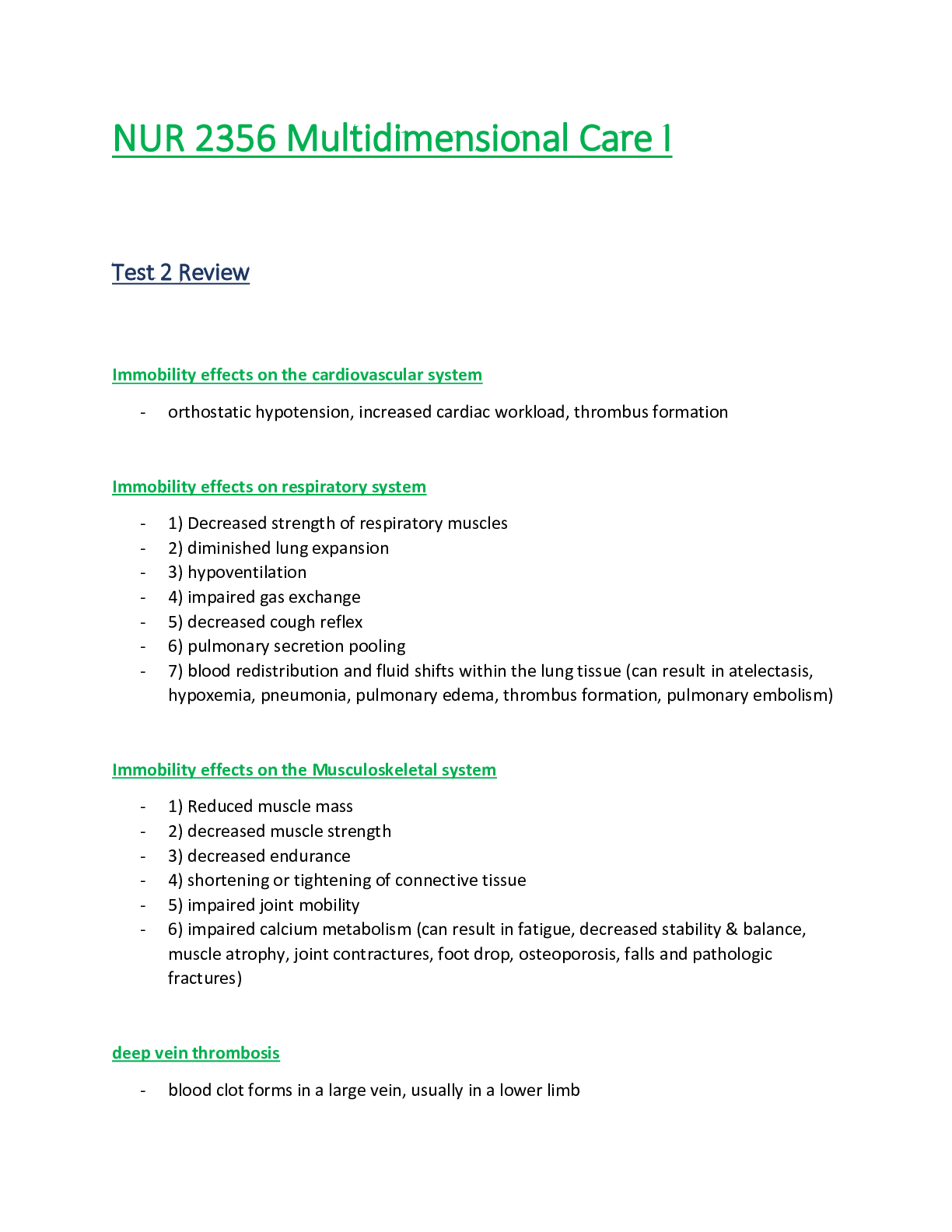*NURSING > EXAM REVIEW > NUR2407: Pharmacology Exam 2 Review (All)
NUR2407: Pharmacology Exam 2 Review
Document Content and Description Below
NUR2407: Pharmacology Exam 2 Review Educating patients on how to use metered dose inhalers (wait 1 min between puffs, etc.). • give 1 minute between puffs • after every dose your pt must rinse ... mouth and spit. • in short term of asthma or CPOD- might need to use IV glucocorticoids in ACUTE situations 2. Know the difference between short- and long-term treatments for asthma and COPD short- acting beta2 agonists (SABAs): brochodialators (-buteral) • taken PRN (as needed) to abort an ongoing attack • take before exercise to prevent an attack from happening • can be given as a inhaler of nebulizer(hospital way) Long- acting beta2 agonists (LABAs) antinflammatory glucocorticoids (-sone) • long-term control inpatient who experience frequent attacks • given on a fixed schedule; NOT on PRN • effective in treating stable COPD• must be combined with a glucocorticoid Adverse effects of bronchodilators: • Inhaled: systemic- tachycardia, angina, tremors • oral: excessive dosage- angina, tachydysrhythmias, tremors • other bronchodilators: theophylline (very common)- has a very narrow therapeutic index of 10-20 3. Know classifications for respiratory drugs (what’s used as a rescue inhaler, and what is for long term management) Bronchodilators: Beta2 agonists (albuterol) • Rescue inhaler • To be used BEFORE steroid inhalers • provide symptomatic relief (acute attack) but do not alter the underlying disease process (inflammation) Anti-inflammatory agents: Glucocorticoids (prednisone, budesonide, fluticasone) • taken long term steroids • Most effective antiasthma drug available • Usually administered by inhalation but can be given via IV or opioids if in an emergency situation • Glucocorticoid dosing is on a fixed schedule, not as needed (PRN) • used to prevent exacerbations • Inhaled glucocorticoids are much safer than systemic glucocorticoids 4. Treatment of acute asthma • when dealing with a patient with Acute Asthma you may need to use Iv corticoids, nebulizer (albuterol, ipratropium, and oxygen) • A nebulized, high-dose SABA (Albuterol)—To relieve airflow obstruction • Nebulized Ipratropium (anticholinergic)—To further reduce airflow obstruction; often used second in line in a acute attack- after albuterol 5. Administration of glucocorticoids (IV vs inhaled, nursing interventions, pt. education) • Usually administered by inhalation but can be given via IV or opioids if in an emergency situation • Glucocorticoid dosing is on a fixed schedule, not as needed (PRN) • during the time of discontinuation (including switching to inhaled glucocorticoids), mustbe given supplemental oral or IV Glucocorticoids at times of severe stress • educate patient to rise mouth and spit after every inhalation inhaled: [Show More]
Last updated: 3 years ago
Preview 1 out of 14 pages

Buy this document to get the full access instantly
Instant Download Access after purchase
Buy NowInstant download
We Accept:

Reviews( 0 )
$14.00
Can't find what you want? Try our AI powered Search
Document information
Connected school, study & course
About the document
Uploaded On
May 13, 2021
Number of pages
14
Written in
All
Additional information
This document has been written for:
Uploaded
May 13, 2021
Downloads
0
Views
116







.png)
.png)
.png)













